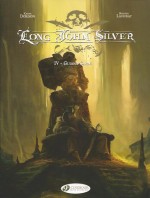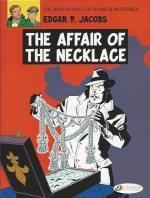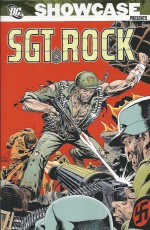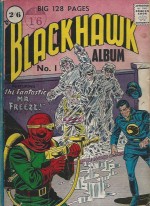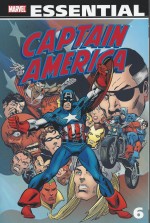
By Jack Kirby, Roy Thomas, Steve Gerber, Don Glut, Sal Buscema, Frank Giacoia & various (Marvel)
ISBN: 978-0-7851-5091-6
Created by Joe Simon & Jack Kirby in an era of ferocious patriotic fervour, Captain America was a dynamic and exceedingly bombastic response to the horrors of Nazism and the threat of Liberty’s loss.
He quickly lost focus and popularity after hostilities ceased: fading during post-war reconstruction to briefly reappear after the Korean War: a harder, darker sentinel ferreting out monsters, subversives and the “commies†who lurked under every American bed. Then he vanished once more until the burgeoning Marvel Age resurrected him just in time to experience the Land of the Free’s most turbulent and culturally divisive era.
He quickly became a mainstay of the Marvel Revolution during the Swinging Sixties but lost his way somewhat after that, except for a glittering period under scripter Steve Englehart. Eventually however he too moved on and out in the middle of the 1970s.
Meanwhile, after nearly a decade drafting almost all of Marvel’s successes, Jack Kirby had jumped ship to arch-rival DC in 1971, creating a whole new mythology and dynamics pantheon before accepting that even he could never win against any publishing company’s excessive pressure to produce whilst enduring micro-managing editorial interference.
Seeing which way the winds blew, Kirby exploded back into the Marvel Universe in 1976 with a promise of free rein, concocting a stunning wave of iconic creations (2001: a Space Odyssey, Machine Man, The Eternals, Devil Dinosaur). At the same time he was handed control of two of his previous co-creations – firmly established characters Captain America and Black Panther – to do with as he wished.
His return was much hyped at the time but swiftly became controversial as his intensely personal visions paid little lip service to company continuity and went explosively his own way. Whilst his new works quickly found many friends, his tenures on those earlier inventions drastically divided the fan base.
Kirby was never slavishly wedded to tight continuity and preferred, in many ways, to treat his stints on Cap and the Panther as creative “Day Onesâ€. This was never more apparent than in the pages of Captain America
This sixth Essential monochrome collection features the last contentious stories by “The Kingâ€, before Kirby quit writing, drawing and editing the Sentinel of Liberty; abruptly returning the patriotic paragon fully to Marvel’s restrictively overarching interlinked continuity.
Gathered within are Captain America #206-229 (cover-dated February 1977 to February 1978) and Captain America Annual #4 plus a bonus crossover tale from Incredible Hulk #232.
At the end of the previous volume the Fighting American had saved the nation from a conclave of aristocratic oligarchs attempting to undo two hundred years of freedom and progress with their “Madbombâ€, visited another dimension and liberated its human abductee-inhabitants and spectacularly turned back an invader from the far future.
The non-stop nightmares resume here with Captain America and the Falcon #206 as ‘Face to Face with the Swine!’ (inked by Frank Giacoia) sees the Star-Spangled Sensation mistakenly renditioned to deepest Central America and toppling the private kingdom and hunting ground of psychotic sadist Comandante Hector Santiago, unchallenged monarch of the prison of Rio del Muerte…
Never one to go anywhere meekly, Cap escapes and begins engineering the brute’s downfall in ‘The Tiger and the Swine!!’ but soon finds the jungles conceal genuine monsters. When they exact primal justice on the tormentors, Cap’s escape with the Swine’s cousin Donna Maria down ‘The River of Death!’ is interrupted by the advent of another astounding “Kirby Kreationâ€â€¦ ‘Arnim Zola… the Bio-Fanatic!!’
The former Nazi geneticist was absolute master of radical biology, dragging Cap and Donna Maria to his living castle and inflicting upon them a horde of diabolical homunculi at the behest of a mysterious sponsor even as the Avenger’s partner Falcon was closing in on his long-missing pal.
Indomitable against every kind of shapeshifting horror, Captain America battles on, enduring a terrible ‘Showdown Day!’ (with Mike W. Royer taking over the inking) whilst back home his girlfriend Sharon Carter uses her resources as SHIELD’s Agent 13 to trace wealthy Cyrus Fenton and expose ‘Nazi “Xâ€!’ as the Sentinel of Liberty’s greatest nemesis…
With his time on the title counting down, Kirby ramped up the tension in #212 as ‘The Face of a Hero! Yours!!’ finds Zola preparing to surgically give the Red Skull Cap’s form, resulting in a cataclysmic clash which leaves the hero bloodied and blind, but ultimately victorious…
With the hero recuperating in hospital, Dan Green steps in to ink #213 as ultimate assassin ‘The Night Flyer!’ targets the ailing Captain America at the behest of unfettered capitalist villain Kligger from the insidious Corporation, but inadvertently triggers the return of the victim’s vision in blockbusting – if abrupt – conclusion ‘The Power’ (Royer inks)…
Reading slightly out of sequence here, Captain America Annual #4 ‘The Great Mutant Massacre!’ ends the Kirby contribution to the career of the Star-Spangled Avenger: a feature- length super-shocker which again eschewed convoluted back-story and the cultural soul-searching which typified the character before and after Kirby’s tenure.
It saw America’s Ultimate Fighting Man strive against humanity’s nemesis Magneto and his latest mutant recruits Burner, Smasher, Lifter, Shocker, Slither and Peeper. This riot of rampaging action and end-of-the-world wonderment pitted the Sentinel of Liberty against a Homo Superior hit-squad aiming to take possession of a super-powered being whose origins were far stranger than anybody could conceive…
When Kirby moved on it left a desperate gap in the schedules. Captain America #215 saw Roy Thomas, George Tuska & Pablo Marcos remix the hero’s origin story for the latest generation with ‘The Way it Really Was!’: reiterating also the history of the heroes who also wore the red, white & blue uniform whilst Steve Rogers was entombed in ice and ending with our hero desperately wondering who the man beneath the mask might be…
For all that, #216 was mostly a reprint. With a framing sequence by Thomas, Dave Cockrum & Giacoia ‘The Human Torch meets…Captain America!’ was written by Stan Lee and illustrated by Kirby & Dick Ayers, rerunning November 1963’s Strange Tales #114. It featured the return of the third of Timely Comics’ Golden Age Big Three – or at least an impersonation of him by the insidious Acrobat – in a bombastic battle romp.
Here’s a quote from the last panel…
“You guessed it! This story was really a test! To see if you too would like Captain America to Return! As usual, your letters will give us the answer!†I wonder how that turned out?
‘The Search for Steve Rogers!’ by Thomas, Don Glut, John Buscema & Marcos began in #217 and with SHIELD’s record division, but the Falcon was soon distracted by a surprising job offer as Nick Fury, busy with the hunt for the Corporation, asked Cap’s partner to train the agency’s newest project: the SHIELD Super-Agents…
These neophyte wonders consisted of Texas Twister, Blue Streak, Vamp and a rather mature Marvel Boy, but the team was already flawed and deeply compromised…
Issue #218 saw Cap targeted by a Corporation agent and fed data which turned his legendarily-fragmented memory to his thawing from the ice. Heading north to retrace his original journey, Cap spent ‘One Day in Newfoundland!’ (Glut, Sal Buscema & John Tartaglione) and uncovered a secret army, an old foe and a colossal robotic facsimile of himself…
In #219 ‘The Adventures of Captain America’ (Glut, Sal B & Joe Sinnott) reveals how, during WWII, the hero and junior partner Bucky were ordered to investigate skulduggery on the set of a movie serial about them and exposed special effects wizard Lyle Dekker as a highly-placed Nazi spy.
Now in modern-day Newfoundland that warped genius has built a clandestine organisation with an incredible purpose; revealed in ‘The Ameridroid Lives!’ (inked by Tartaglione & Mike Esposito) as the captive crusader is mind-probed and dredges up shocking submerged memories.
When he and Bucky were chasing a swiftly launched secret weapon at the end of the war, the boy died and Steve Rogers fell into the North Atlantic and was frozen in a block of ice until found and thawed by the Avengers. At least, he always thought that’s how it happened.
Now as the probe does its devilish work, Captain America remembers that he was in fact picked up by Dekker after the spy was punished by the Red Skull and exiled for his failures. Deciding to work only for his own interests, Dekker then attempted to transfer Cap’s power to himself and it was only in escaping the original Newfoundland base that Rogers crashed into the sea and froze…
Now decades later, the vile scheme is finally accomplished: Cap’s energies are replicated in a fifteen foot tall super-android with the aging Dekker’s consciousness permanently embedded in its metal and plastic brain.
…And only then does the fanatic realise he’s made himself into a monster at once unique, solitary and utterly apart from humanity…
The deadline problems still hadn’t eased and this episode is chopped in half with the remainder of the issue giving Falcon a short solo outing as ‘…On a Wing and a Prayer!’ by Scott Edelman, Bob Budiansky & Al Gordon finds the Pinioned Paladin hunting a mad archer who has kidnapped his avian ally Redwing…
The remainder of the Ameridroid saga appears in Captain America #221 as Steve Gerber and David Kraft co-script ‘Cul-De-Sac!’, wherein the marauding mechanoid is finally foiled by reason not force of arms whilst ‘The Coming of Captain Avenger!’ (Edelman, Steve Leialoha & Gordon) provides another space-filling vignette with former sidekick Rick Jones being given a tantalising glimpse of his most cherished dreams…
Issue #222 sees Gerber fully in the writer’s seat as ‘Monumental Menace!’ (by Sal B, Tartaglione & Esposito) as “The Search for Steve Rogers†storyline moves to Washington DC.
As our hero examines army records at the Pentagon, the Corporation’s attempts to destroy him become more pronounced and bizarre. After escaping an animated, homicidal Volkswagen Steven Grant Rogers learns at last that he was once the son of a diplomat and lost a brother at Pearl Harbor (all these revelations were later rather ingeniously retconned out so don’t worry about spoilers). Soon however events spiral and Liberty’s Sentinel is attacked by the Lincoln Memorial, sacrilegiously brought to lethal life…
The madness continues as the hulking, monstrous horror responsible screams ‘Call Me Animus’ before unleashing a succession of blistering assaults which result in hundreds of collateral casualties before being finally repulsed…
The epic is again interrupted as Peter Gillis, Mike Zeck, Esposito & Tartaglione contrive a thrilling mystery with a battered Cap awakening in a river with partial amnesia and a new face. Forced to find out what happened to him, the sinister trail leads to guest-villains Senor Suerte and Tarantula in ‘Saturday Night Furor!’…
The Search Saga resumes in #225 as ‘Devastation!’ (Gerber, Sal Buscema, Esposito & Tartaglione) as Fury gives Captain America access to incarcerated mind-master Mason Harding (inventor of the “Madbombâ€,as seen in Essential Captain America volume 5) who uses his embargoed technology to unseal the Avenger’s closed memories at long last…
Sadly the cathartic shock has terrifying repercussions: although Rogers regains many memories, the mind machines somehow denature the Super-Soldier serum in his blood and he is forced to ask ‘Am I Still Captain America?’ when his perfect warrior’s frame reverts to the frail, sickly mess it used to be.
New scripter Roger McKenzie begins his superb run of tales – with Sal B, Esposito & Tartaglione still illustrating – as SHIELD puts all its resources into restoring the One Man Army but is suddenly brought low by an invasion of body-snatching Red Skulls.
Back in fighting trim, the incursion is repelled by the resurgent Patriotic Paragon in ‘This Deadly Gauntlet!’ but the aftermath sees the too-often compromised Peacekeeping agency mothball many of its facilities. During the closure and destruction of the Manhattan branch, Cap is ambushed by the Constrictor in #228’s ‘A Serpent Lurks Below’ and subsequently gets his first real lead on the Corporation…
The trail leads back to Falcon and the Super Agents, and with ‘Traitors All About Me!’ the Cap exposes the rotten apples working for Kligger – and another enemy force – leading to a spectacular ‘Assault on Alcatraz!’ (McKenzie, Roger Stern, Sal Buscema & Don Perlin) to rescue hostage friends and end the Corporation’s depredations in Captain America #230…
While this solely unfolding epic was entertaining readers here, fans of the Hulk were reading of equally shady shenanigans in his title (and Kirby’s Machine Man) where the Corporation’s West Coast Chief Curtiss Jackson was ruthlessly enacting his own perfidious plans. This volume concludes as parallel plotlines converge into a bombastic action-extravaganza as the crossover conclusion from Incredible Hulk #232. ‘The Battle Below’ by Stern, David Michelinie, Sal Buscema & Esposito…
The King’s commitment to wholesome adventure, breakneck action and breathless wonderment, combined with his absolute mastery of the comic page and unceasing quest for the Next Big Thrill, always make for a captivating read and this stuff is as good as any of his post Fourth World stuff. However, it does make the collection a bit of a double-edged treat. Engaging and impressive as the last two thirds of this volume is, the stories are worlds away in style, form and content from the perfect imaginative maelstrom of Kirby at his creative peak.
Not better but very, very different.
You can hate one and love the other, but perhaps it’s better to try to appreciate each era on its own merits…
Fast-paced, action-packed, totally engrossing fights ‘n’ tights masterpieces no fan should ignore and above all else, fabulously fun tales of a true American Dream…
© 1977, 1978, 1979, 2011 Marvel Characters, Inc. All rights reserved.



